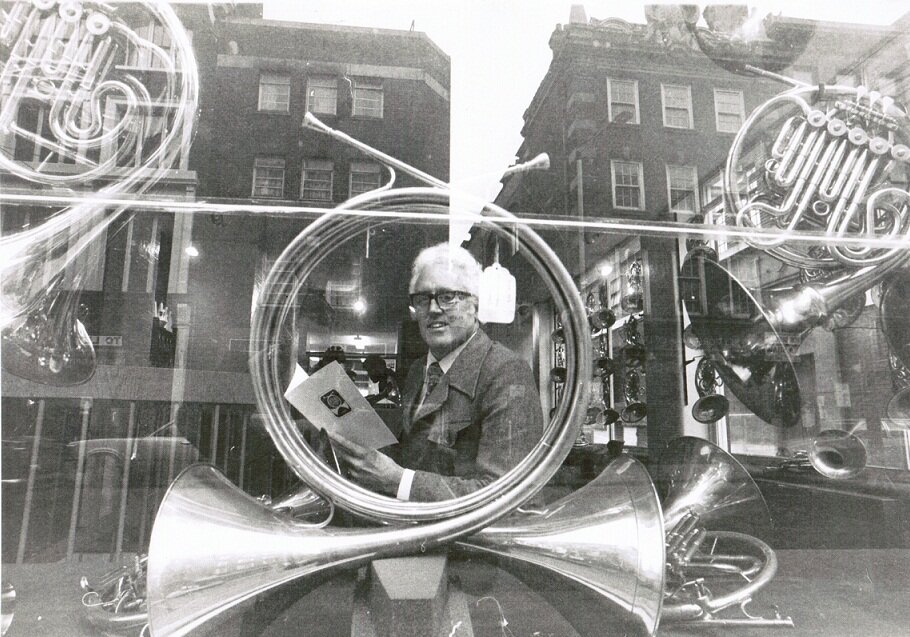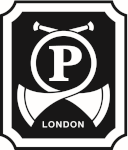100 Years of Paxman
Our History!
In 1919, Harry, Bertram and William Paxman together started a company supplying brass, woodwind and percussion instruments from an address in Southwark, South London. Over the following 100 years, that company would come to specialise in the supply and manufacture of the horns which are today a mainstay of the global horn playing community.
By 1935 the company had grown and needed more space, so it moved from Southwark to Shaftesbury Avenue where it continued to expand. However, the start of the Second World War meant that there was a shortage of workers and this, combined with the destruction of the roof of the Shaftesbury Avenue premises during the blitz of 1940, meant that the company was forced to temporarily relocate to the Paxman family home in Ealing.
In 1944 Paxman restructured and moved to Gerrard Street. Harry acquired the services of three retired craftsmen (Harry Pace, Charles Staneford and Joe Dobson), some instrument assembly started and in March 1945, Harry’s eldest son, Robert (Bob) joined the company as an apprentice.
At this time most players in the UK were playing the old narrow bore ‘pea-shooter’ type of instruments used by Aubrey and Dennis Brain, but with a growing influence of players such as Friedrich Adolf Borsdorf and Franz Paersch, the bold decision was taken to concentrate on the larger bore, rotary valved German style of instrument. Gradually production increased and in 1948 the first Paxman designed models were built.
It was in 1959 that a professional horn player from Australia, Richard (Dick) Merewether, first approached Bob Paxman with his ideas on design. With over 25 years of playing experience behind him, Dick had a unique insight into hornists’ problems and with his playing career curtailed by illness, he devoted the rest of his life to the design and development of horns. His innovative designs were first introduced in 1959, and over a number of years the whole product range was revised and expanded, to include for the first-time, horns in Bb/f-alto, and triple horns in F/Bb/f-alto.

In 1961 Harry retired and the management team of Bob Paxman, Fred Leach, Ted Adams, Jim Paxman (Bob’s younger brother) and Dick Merewether became directors. The company name changed from Paxman Brothers to Paxman Musical Instruments Limited and in 1972 moved to a larger site in Long Acre and acquired a small factory unit in Kent.
At its peak, production reached around 300 instruments a year, but the recession of the early 1980s forced the firm to down-size and make severe economies in order to survive. However, survive it did, remaining in Long Acre until excessive rent demands meant moving once again. In 1995 the company relocated back to its origins in Southwark, with the retail and repair departments setting up in Union Street, whilst manufacturing was located in Staplehurst, Kent.
Around this time, Paxman introduced a number of important changes to their instruments, including the dual-bore system for full double horns and double descant horns along with triple-bore for triple horns. In 1997 titanium rotors were introduced as a lighter option to brass.
In 1993 Robert Paxman was awarded the MBE by Her Majesty the Queen in recognition of fifty years’ service to the Musical Instrument Industry and in 1996, he retired, with Chris Huning becoming Managing Director. In July 2011 Bob died after a short illness at the age of 82.
In 2008 the Paxman Academy horn was introduced. This was the result of years of design and testing and is built by a specialist horn manufacturer in China. Since then the line has grown to include ¾ size single horns in F and Bb, a compensating double similar to the old Paxman Studenti and the detachable bell Series 4 and Series 5. This ensures that there is a high quality, well designed and affordable horn for every player at every stage of their development.
Having outgrown the Union Street premises, the company is now located at 197 Long Lane, SE1. Paxman horns are still built to the principles established during the early years of the company and whilst modern technology is used where appropriate to ensure that Paxman instruments are amongst the best engineered in the world today, the professional models are still assembled by hand in the workshop at the new premises, not far from where it all started 100 years ago.
The Paxman team is headed by Ian Jackman (General Manager), Steve Flower (Sales Manager) and John Turner (Production Manager), ably assisted by a number of faces familiar to anyone who has visited the shop. This team is committed to respecting the traditions established over the past 100 years, whilst continuing to develop and innovate for the benefit of horn players of the future.



